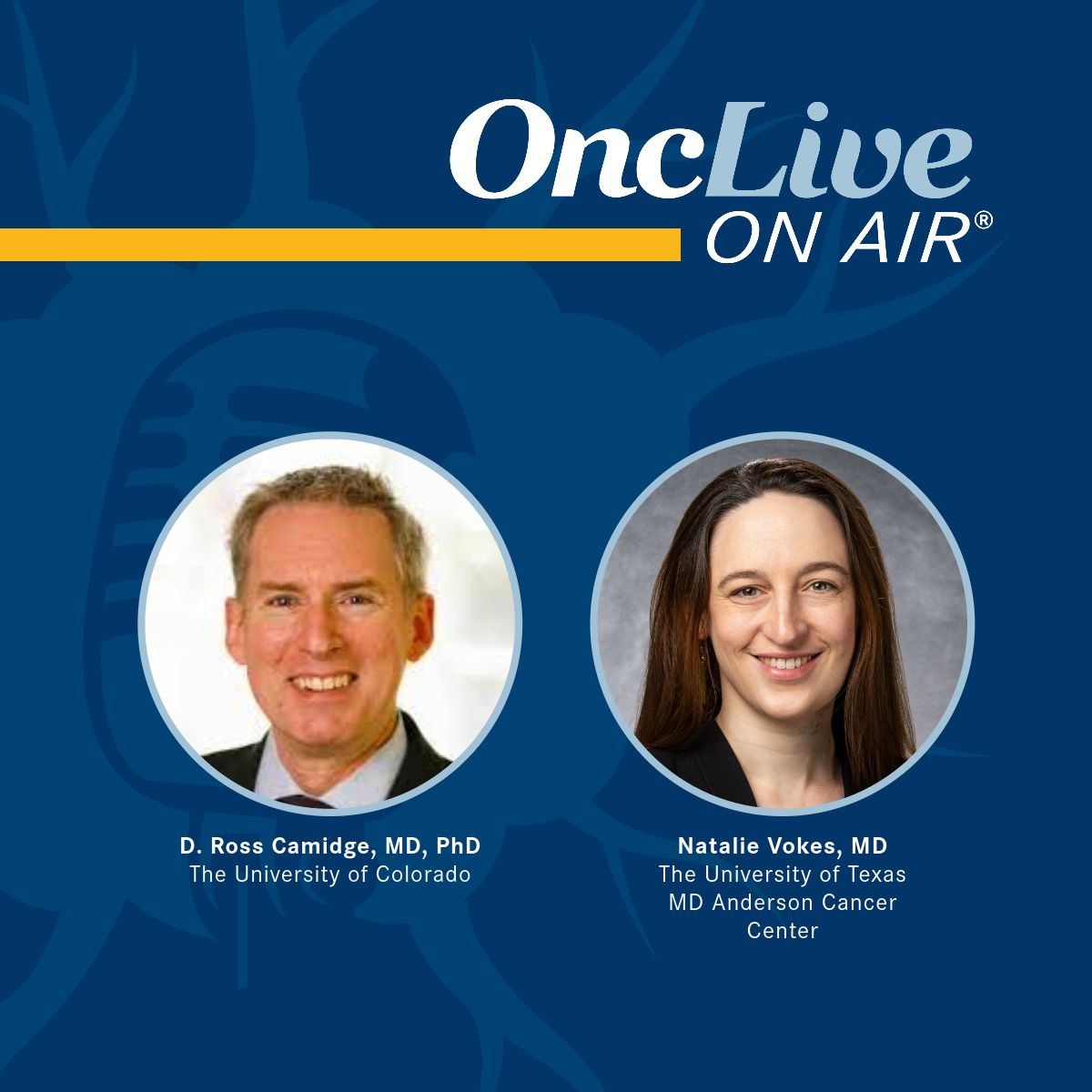News
Article
Subgroup Analysis Makes the Case for Earlier Liso-Cel Administration in R/R MCL
Manali Kamdar, MD, discusses responses with liso-cel according to prior lines of therapy and BTK inhibitor exposure in mantle cell lymphoma.
Manali Kamdar, MD

Prolonged responses and survival outcomes with lisocabtagene maraleucel (liso-cel; Breyanzi) were observed among patients with mantle cell lymphoma (MCL) who were exposed to fewer than 5 prior lines of therapy, as well as those without BTK inhibitor–refractory disease, indicating that this agent may be more effective when administered in earlier lines, according to Manali Kamdar, MD.1
At the 2024 EHA Congress, results from a post-hoc subgroup analysis of responses with liso-cel according to prior lines of therapy and BTK inhibitor exposure in the MCL cohort of the phase 1 TRANSCEND NHL 001 trial (NCT02631044) were reported. Clinically meaningful activity was observed across all subgroups; responses were comparable with the overall population (n = 88).
Among patients treated with 5 or more prior lines of therapy (n = 26), the median duration of response (DOR) was 6.7 months (95% CI, 2.4-15.8), the median progression-free survival (PFS) was 7.4 months (95% CI, 3.3-12.3), and the median overall survival (OS) was 13.5 months (95% CI, 9.5-17.1). For patients exposed to 3 or 4 prior lines of therapy (n = 29), these values were 17.5 months (95% CI, 3.3-not reached [NR]), 16.6 months (95% CI, 2.6-NR), and 18.4 months (95% CI, 6.7-NR), respectively.
Additionally, patients without refractory disease (n = 35) achieved a median DOR of 24.0 months (95% CI, 7.6-NR) vs 5.3 months (95% CI, 2.3-15.8) for patients with refractory disease (n = 45). In these respective populations, the median PFS was 24.0 months (95% CI, 8.6-NR) vs 6.1 months (95% CI, 3.1-16.5), and the median OS was 36.3 months (95% CI, 15.3-NR) vs 11.1 months (95% CI, 6.1-17.1).
Based on results from the full efficacy analysis of the MCL cohort, the FDA approved liso-cel for this population in May 2024.2
“This subgroup analysis does demonstrate comparable efficacy and excellent safety [with liso-cel]. However, efficacy is lower [in more heavily pretreated and BTK-refractory subgroups vs] the entire cohort by approximately 10%, which goes to show that liso-cel should be investigated in earlier lines of treatment,” Kamdar stated during an interview with OncLive®.
In the interview, Kamdar highlighted previously reported findings from the TRANSCEND NHL 001 trial that laid the groundwork for this subgroup analysis in the MCL cohort, variations in efficacy outcomes of liso-cel based on prior lines of treatment and BTK inhibitor refractoriness, and the most common toxicities observed with liso-cel across these subgroups.
Kamdar is an associate professor of medicine and hematology-oncology, as well as the clinical director of Lymphoma Services at the University of Colorado Anschutz School of Medicine in Aurora, Colorado.
OncLive: What previously reported findings from TRANSCEND NHL 001 provided the foundation for this subgroup analysis?
Kamdar: The MCL cohort of the TRANSCEND NHL 001 study investigated liso-cel in patients with relapsed/refractory disease. The primary analysis of the study evaluated its primary end points, which were safety and overall response rate [ORR]. The complete response [CR] rate was robust at 72.3%. The safety profile was extremely tolerable. [The incidence of] grade 3 and higher cytokine release syndrome was 1%, and grade 3 or higher neurogenic toxicity was 9%. [Based on these data], the FDA approved liso-cel for patients with relapsed/refractory MCL after 2 or more prior lines of treatment. At the 2024 EHA Congress, we presented a post-hoc subgroup analysis of the study evaluating responses in patients by lines of treatment, as well as based on their response to a prior BTK inhibitor.
What should be known about the study design and methodology?
This was a single-arm study that enrolled patients aged 18 years and older who were diagnosed with MCL, provided that they had progressed on 2 or more lines of treatment, including an alkylator, a BTK inhibitor, and a CD20-targeted antibody. It’s extremely important to note that patients could have received a prior autologous transplant, prior allogenic transplant, and could have had prior central nervous system disease that was active or treated in the past. This was a heavily pretreated subgroup. A total of 104 patients were [leukapheresed], 88 of whom received liso-cel. Six patients received [liso-cel at] dose level 1, which was 15 million CAR T cells. The remaining patients received it at dose level 2, which was 100 million CAR T cells.
Regarding prior lines of treatment, patients were divided into those who had received 2, 3 to 4, or 5 to 11 prior lines of treatment. Of the 88 patients, 26 had received 5 to 11 prior lines of treatment. In terms of the refractory cohort, 47 patients were refractory to prior BTK inhibition. Demographics and baseline characteristics were otherwise well balanced.
How did efficacy outcomes with liso-cel vary according to the number of prior lines and BTK-refractory disease?
The ORR was generally comparable across patient subgroups, particularly in terms of [the number of prior] lines of treatment. However, [the ORR] was notably [numerically] lower in patients who had received 5 or more lines of treatment. The ORR was 83% for the entire cohort with a CR rate of 72%. On the other hand, for patients who had received 5 or more lines of treatment, the CR rate dropped to 65%. That was also true for patients who were refractory to BTK inhibition, where the CR rate was slightly lower at 64%. It’s also important to highlight that among the patients who were refractory to a BTK inhibitor, most had received more than 5 prior lines of treatment.
The median PFS for the entire cohort was 15.7 months. The median OS was 18.2 months in the entire cohort, but when you looked at it through the subgroup lens, patients who had received 5 or more lines of treatment had a lower median PFS of 7.4 months. The same can be said for DOR. Regarding [patients who were] BTK inhibitor–refractory, the median PFS and DOR were both under 1 year, and the median OS was also lower compared with the entire cohort.
What were the most common toxicities associated with liso-cel? Did these differ between subgroups?
There was a little more assurance when we looked at safety in the subgroup analysis. Treatment-emergent adverse effects were generally comparable across subgroups. However, they were more cytopenias if patients had received more than 5 prior lines of treatment. Regarding CAR T cell therapy–related unique toxicities, such as CRS and immune effector cell–associated neurotoxicity syndrome, there were no differences [based on] lines of treatment or refractoriness to BTK inhibition.
Based on the findings of this study, what are some proposed next steps for evaluating the clinical use of liso-cel in relapsed/refractory MCL?
It will be nice to continue to follow up with these patients. It will be important to highlight that patients who have progressed on 2 or more lines prior of treatment with MCL experienced robust, durable responses and exceptional safety with liso-cel. This [outcome] is spanned across all age cohorts. I look forward to more clinical trials investigating liso-cel in even earlier lines of treatment.
References
- Palomba ML, Siddiqi T, Gordon LI, et al. Subgroup analyses in patients with R/R MCL treated with lisocabtagene maraleucel by prior lines of therapy and response to Bruton tyrosine kinase inhibitor from the TRANSCEND NHL 001 MCL cohort. Presented at: European Hematology Association 2024 Hybrid Congress; Madrid, Spain; June 13-16, 2024. Abstract P1126.
- U.S. Food and Drug Administration approves Bristol Myers Squibb’s Breyanzi as a new CAR T cell therapy for relapsed or refractory mantle cell lymphoma. News release. Bristol Myers Squibb. May 30, 2024. Accessed August 12, 2024. https://news.bms.com/news/corporate-financial/2024/U.S.-Food-and-Drug-Administration-Approves-Bristol-Myers-Squibbs-Breyanzi-as-a-New-CAR-T-Cell-Therapy-for-Relapsed-or-Refractory-Mantle-Cell-Lymphoma/default.aspx




%20(2)%201-Recovered-Recovered-Recovered-Recovered-Recovered.jpg?fit=crop&auto=format)

%20(2)%201-Recovered-Recovered-Recovered-Recovered-Recovered.jpg?fit=crop&auto=format)
%20(2)%201-Recovered-Recovered-Recovered-Recovered-Recovered.jpg?fit=crop&auto=format)